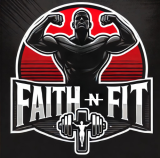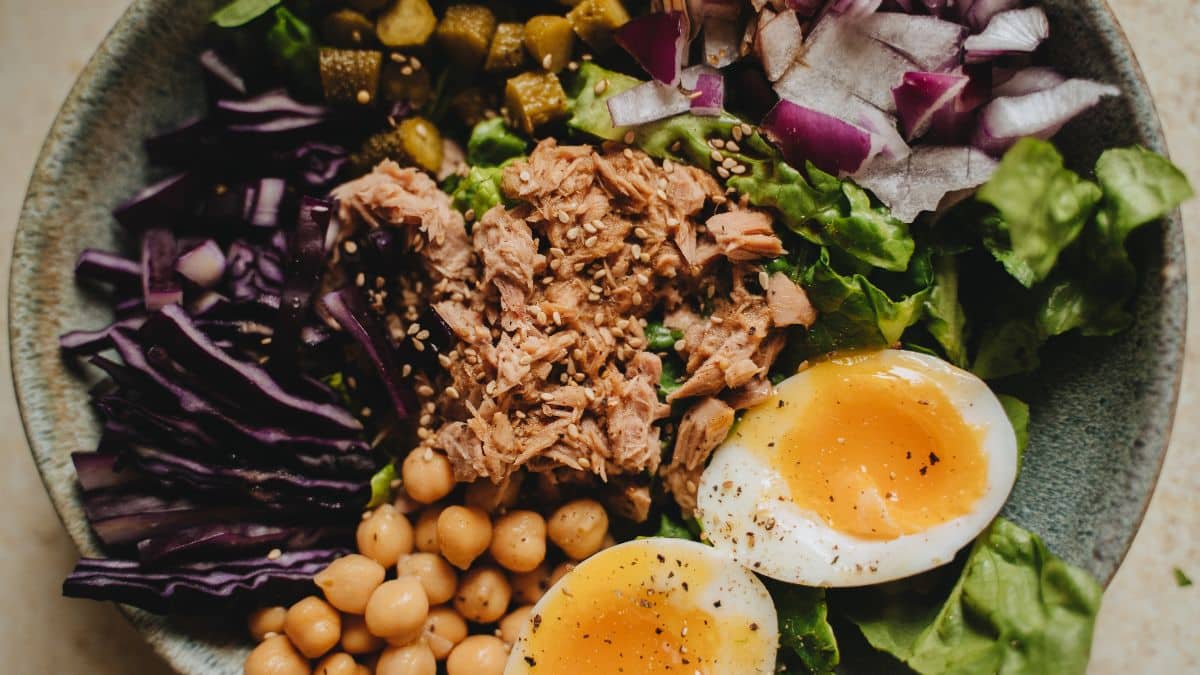Protein is more than just a fitness buzzword—it’s the most essential macronutrient for reshaping your body, whether your goal is to burn belly fat or build lean muscle. It’s the only nutrient directly responsible for repairing and growing tissue, supporting metabolism, and preserving muscle during weight loss.
In this comprehensive guide, you’ll learn everything you need to know about protein, including:
- ✅ What protein is and how it functions in your body
- ✅ Why it’s essential for both fat loss and muscle growth
- ✅ How much protein you actually need (based on your weight and goals)
- ✅ How your body digests and uses protein efficiently
- ✅ How protein curbs cravings and burns stubborn stomach fat
- ✅ How to strategically use protein to maximize muscle gains
By the end of this article, you’ll understand how to optimize your diet with protein, how to align it with your workouts, and how to stop guessing and start building your ideal body—one gram at a time.
What Is Protein and How Does It Function in Your Body?
Protein is one of the three essential macronutrients, alongside carbohydrates and fats. But unlike the others, protein’s primary job isn’t just energy—it’s construction and repair.
Chemically, protein is made up of chains of amino acids, the building blocks of your body. These amino acids form muscle tissue, skin, organs, enzymes, and even hormones. Of the 20 amino acids your body uses, 9 are essential, meaning they must come from the foods you eat—your body can’t make them on its own.
Here’s how protein functions in your body:
- Muscle Repair & Growth: After exercise—especially strength training—your muscle fibers suffer microscopic damage. Protein provides the raw material (amino acids) needed to repair and rebuild those fibers stronger and thicker.
- Enzyme Production: Protein supports vital metabolic processes through enzymes that break down food and generate energy.
- Hormone Regulation: Some hormones, like insulin and growth hormone, are protein-based. These influence fat storage, muscle growth, and metabolism.
- Immune Function: Antibodies are made of protein and defend the body from illness and infection.
- Transport and Storage: Hemoglobin (a protein) carries oxygen through your blood. Others transport nutrients like iron and zinc to where your body needs them.
💡 Math Moment: If you’re 180 pounds and eat 0.8g of protein per pound, that’s 144 grams of protein daily—just enough to cover basic muscle repair and growth. Your body uses up to 30g of protein per meal efficiently, so spacing intake throughout the day matters.
In short, protein is not just “fuel.” It’s the scaffolding of your physique, the engineer of your recovery, and the switch that turns calories into results.
Why Is Protein Important to the Body?
Protein is not just important—it’s indispensable. Every single cell in your body relies on protein to function, repair, and grow. From your skin to your muscles to your internal organs, protein provides the structural foundation.
But its importance goes beyond structure. Protein is crucial for both performance and transformation—whether you’re trying to lose fat, gain muscle, or just improve your health.
Here’s why protein is so important:
- Muscle Preservation During Fat Loss: When you’re in a calorie deficit, your body doesn’t just burn fat—it may also break down muscle tissue. Protein protects your lean mass, which keeps your metabolism high and your physique athletic—not skinny.
- Building Lean Muscle Mass: Without enough protein, your body lacks the materials to build new muscle tissue. Even with perfect workouts, no protein = no gains.
- Satiety and Appetite Control: Protein is the most filling macronutrient. It slows digestion and triggers hormones like peptide YY and GLP-1 that reduce hunger. This makes it easier to maintain a calorie deficit for fat loss.
- Blood Sugar Stabilization: Protein helps slow the absorption of glucose from carbohydrates, reducing blood sugar spikes and crashes that lead to cravings and fat storage.
- Healing and Recovery: Injuries, surgeries, illness, and intense workouts all demand higher protein intake. Your immune system, connective tissue, and skin rely on protein to recover quickly and completely.
💡 Performance Insight: A 2021 study published in the American Journal of Clinical Nutrition found that individuals who increased their protein intake while dieting lost more fat mass and preserved more lean muscle than those who followed lower-protein plans—even with equal calories.
In short, protein is the cornerstone nutrient for any body transformation. It keeps your metabolism active, your appetite under control, and your recovery dialed in.
What Role Does Protein Play in the Body?
Think of protein as the blueprint manager of your entire body. While carbs and fats mainly serve as energy sources, protein’s job is building, maintaining, and regulating every tissue and system.
Whether you’re walking, lifting weights, healing from a cut, or fighting off a virus, protein is working behind the scenes to repair, rebuild, and regulate.
Here’s a breakdown of protein’s key roles:
- Structural Support:
Proteins like collagen and keratin make up your skin, bones, tendons, and hair. Muscle tissue itself is formed from actin and myosin—both protein-based. - Enzymes and Metabolic Activity:
Enzymes are specialized proteins that speed up chemical reactions in your body, such as digestion and energy production. Without these, your metabolism would crawl. - Hormone Synthesis:
Many hormones—including insulin, glucagon, and human growth hormone—are protein-based. These regulate blood sugar, fat storage, muscle growth, and appetite. - Immune System Defense:
Antibodies are proteins that identify and neutralize harmful invaders like bacteria and viruses. Low protein intake weakens your immune defenses. - Transportation and Storage:
Hemoglobin (a protein) carries oxygen in your blood. Other transport proteins move nutrients, vitamins, and hormones to where they’re needed. - Cellular Signaling and DNA Expression:
Proteins play a role in turning your genes “on” or “off.” This determines how your body responds to training, stress, and nutrition.
💡 Metabolic Math: Protein accounts for about 15–20% of your total body weight. If you weigh 180 pounds, that’s roughly 27–36 pounds of protein actively working inside your muscles, organs, skin, and blood.
Without enough protein, these systems can break down, leading to fat gain, muscle loss, poor recovery, and slower metabolism. But when you meet your protein needs, your body becomes a high-performance machine, capable of burning fat and building muscle simultaneously.
How Much Protein Do You Need?
Your protein needs depend on your body weight, goals, and activity level. There’s no one-size-fits-all answer, but we can calculate your ideal intake using real numbers and proven science.
General Protein Guidelines:
| Goal | Grams per Pound of Body Weight | Example (180 lbs) |
|---|---|---|
| Basic Health | 0.36 g/lb | 65g/day |
| Fat Loss | 0.8 – 1.0 g/lb | 145–180g/day |
| Muscle Gain | 1.0 – 1.2 g/lb | 180–215g/day |
| Strength Athletes | 1.0 – 1.5 g/lb | 180–270g/day |
💡 Math Example:
A 180-pound man trying to burn fat and preserve muscle should aim for at least 144 grams of protein per day. That breaks down into four meals of 36g each or three larger servings around 48g.
Factors That Affect Protein Needs
- Training Intensity: The harder you train, the more amino acids you need for repair
- Calorie Deficit: More protein helps preserve lean mass when dieting
- Age: Older adults require more protein to prevent muscle loss (sarcopenia)
- Body Composition Goals: The leaner you are, the higher your intake should be
- Recovery Time: Protein needs spike after illness, injury, or surgery
Daily Protein Distribution Tips
- Spread your protein across 3–5 meals to maximize muscle protein synthesis (MPS)
- Aim for 25–40g per meal depending on your body size
- Include complete protein sources (with all 9 essential amino acids) in each meal
📌 Quick Tip: Eating enough protein isn’t just about the total—it’s about timing, quality, and consistency. Your body absorbs protein better in smaller, spaced-out doses rather than one or two massive meals.
How Does the Body Digest and Absorb Protein?
Protein digestion is a complex and efficient process that breaks large protein molecules down into usable amino acids—the building blocks your body uses for muscle repair, hormone production, and immune function.
It all starts in the stomach and finishes in the small intestine, where nutrients are absorbed into the bloodstream and transported to where they’re needed most.
Step-by-Step Breakdown of Protein Digestion:
- Mouth:
Chewing breaks down protein-containing foods into smaller pieces, increasing surface area for digestion. - Stomach:
The stomach releases hydrochloric acid (HCl) and pepsin, an enzyme that begins breaking proteins into peptides (short chains of amino acids). - Small Intestine:
Here, enzymes like trypsin and chymotrypsin from the pancreas complete the breakdown of peptides into individual amino acids. - Absorption:
The amino acids are absorbed through the walls of the small intestine and enter the portal vein, which carries them to the liver and eventually into the bloodstream. - Utilization:
Your body uses these amino acids to repair muscle tissue, build enzymes and hormones, or—if excess is present—convert some into glucose (gluconeogenesis) or even fat if energy needs are low.
💡 Metabolic Efficiency: Your body can absorb and utilize around 20–40 grams of protein per meal, depending on the source and your muscle mass. Higher doses aren’t wasted—but their extra benefit for muscle building plateaus after about 40g.
What Affects Protein Digestion?
- Source Quality:
Animal proteins like eggs, fish, and whey are more bioavailable (used efficiently) than most plant proteins. - Digestive Health:
Gut inflammation or low stomach acid can impair absorption and limit results. - Meal Composition:
Combining protein with fiber or fat slows digestion slightly—but this can improve satiety and stabilize blood sugar.
Your body’s ability to break down and absorb protein is the key to unlocking its fat-burning and muscle-building potential. But even the best protein source is only effective if your digestive system can process it properly.
How to Use Protein to Burn Stomach Fat
If your goal is to get leaner and shrink your waistline, protein should be your #1 fat-loss tool. Unlike fad diets or fat burners, protein works by supporting your body’s natural fat-burning mechanisms—especially around stubborn belly fat.
Here’s how it works: protein helps you burn more calories, preserve lean muscle, and reduce hunger—all while supporting hormone balance and metabolism.
5 Ways Protein Burns Stomach Fat:
- Boosts Thermogenesis
Protein has the highest thermic effect of all macronutrients—meaning it takes more energy to digest.- 20–30% of protein calories are burned just by digesting it
- Compare that to carbs (5–10%) and fats (0–3%)
- Reduces Cravings and Late-Night Snacking
High-protein meals increase satiety hormones (like GLP-1 and peptide YY) and reduce levels of ghrelin, the hunger hormone.
Result: Fewer sugar cravings and fewer late-night snack attacks. - Preserves Lean Muscle Mass
When you’re in a calorie deficit, your body risks breaking down muscle tissue. Protein prevents this, keeping your metabolism high and forcing fat—not muscle—to be burned. - Improves Insulin Sensitivity
Balanced protein intake with meals helps stabilize blood sugar, reducing insulin spikes that encourage fat storage around the midsection. - Enhances NEAT and Recovery
By improving muscle recovery, protein allows you to move more (NEAT = Non-Exercise Activity Thermogenesis), burn more, and train more often—creating a bigger daily calorie deficit.
💡 Fat Loss Math:
Let’s say you increase your protein intake by 100 calories per day and reduce your carb intake by the same amount. That switch alone could burn 20–30 more calories per day through thermogenesis, or over 10,000 calories per year—equal to almost 3 pounds of fat burned, with no other changes.
Best Practices to Use Protein for Fat Loss:
- Eat 25–40g of protein per meal, spaced evenly
- Focus on lean sources (chicken, fish, egg whites, low-fat Greek yogurt, whey)
- Include high-fiber veggies to increase satiety
- Don’t skip protein at breakfast—it sets the tone for blood sugar and appetite all day
- Consider a protein shake as a meal replacement to control calories and cravings
In short, if you want to burn belly fat without losing muscle, you need to prioritize protein every time you eat.
How to Use Protein to Build Muscle
Muscle growth doesn’t happen in the gym—it happens in the kitchen and during recovery. While your workouts create the stimulus for muscle breakdown, it’s protein that repairs, rebuilds, and grows that tissue stronger and thicker.
If your goal is to build lean, dense muscle, then protein must be the foundation of your daily strategy.
The Muscle-Building Process (Simplified):
- Muscle Tension: You train with progressive overload, creating microscopic tears in your muscle fibers.
- Protein Breakdown: This triggers muscle protein breakdown (MPB).
- Protein Synthesis: When you eat protein, the amino acids trigger muscle protein synthesis (MPS)—the repair and growth process.
- Net Positive Balance: If MPS > MPB, you gain muscle.
Without enough quality protein at the right times, you may train hard—but you won’t grow.
💪 Math-Based Formula for Gains:
To build muscle, aim for 1.0–1.2 grams of protein per pound of body weight. A 180-pound man would need 180–215 grams per day, ideally divided over 4–5 meals.
Protein Timing for Maximum Muscle Growth
When you eat protein matters—especially around your workouts.
| Time | Goal | Amount |
|---|---|---|
| Pre-Workout | Prevent breakdown, fuel performance | 20–30g |
| Post-Workout | Spike synthesis, speed recovery | 30–40g |
| Before Bed | Support overnight recovery | 20–40g (casein ideal) |
Spreading protein evenly across the day optimizes muscle protein synthesis. Each meal should include 20–40g of complete protein to keep MPS elevated.
Best Protein Sources for Muscle Growth
Choose complete, high-biological value proteins that contain all 9 essential amino acids:
- Whey protein isolate (fast-digesting, ideal post-workout)
- Lean meats (chicken, turkey, beef)
- Eggs and egg whites
- Greek yogurt and cottage cheese
- Fish (especially salmon, tuna, and cod)
- Plant-based options (tofu, tempeh, legumes—combine for full amino profile)
📌 Pro Tip: Use protein shakes to help hit daily targets—especially post-workout or when you’re short on time. But whole foods should still make up the majority of your intake.
Don’t Just Lift—Eat to Grow
If you’re lifting heavy but not eating enough protein, your gains will stall. Protein is what translates your training into results. Combined with smart programming, sleep, and recovery, it unlocks your body’s ability to add new muscle tissue week after week.
Key Takeaways: Mastering Protein for Fat Loss and Muscle Growth
Protein is more than a nutrient—it’s the foundation of your transformation. Whether you’re chasing six-pack abs, adding lean muscle, or just eating smarter, how you use protein can make or break your progress.
Let’s recap what you’ve learned:
- ✅ What protein is: A chain of amino acids that builds, repairs, and supports nearly every function in your body
- ✅ Why it matters: It drives muscle growth, preserves lean mass, boosts metabolism, and regulates key hormones
- ✅ How much you need: 0.8–1.2 grams per pound of body weight depending on your goal
- ✅ How it’s digested: Protein is broken into amino acids and absorbed via the small intestine to fuel growth and recovery
- ✅ How to burn fat: Use protein to increase thermogenesis, reduce cravings, and spare muscle during calorie deficits
- ✅ How to build muscle: Prioritize quality sources, time your intake around workouts, and hit your daily target consistently
📊 Bottom line: When used strategically, protein is a powerful tool that supports body recomposition—the ability to lose fat and gain muscle at the same time.
It’s not just about eating more protein. It’s about eating it with purpose.
🥤 Fuel Your Gains with Trusted Protein
Get high-quality protein sources to support fat loss, muscle recovery, and daily performance:
- 💪 Optimum Nutrition Gold Standard Whey – #1 Rated for Lean Muscle
- 🧊 Dymatize ISO100 – Hydrolyzed Protein for Faster Recovery
- 🌱 Orgain Organic Plant-Based Protein – Clean Fuel for Vegan Lifters
“Don’t just train harder—recover smarter with the right protein.”
Subscribe now and get a 14-day free trial workout app for iPhone users.






